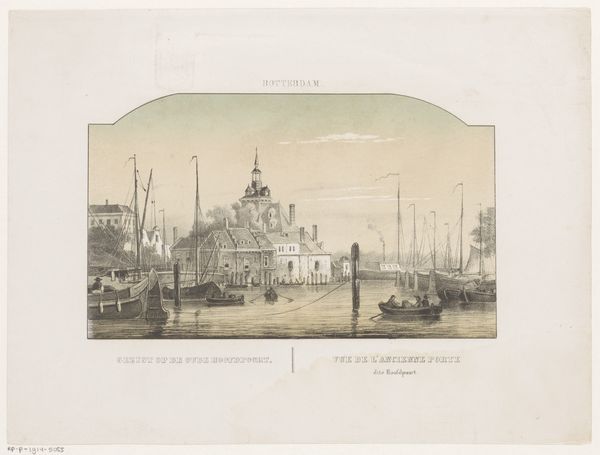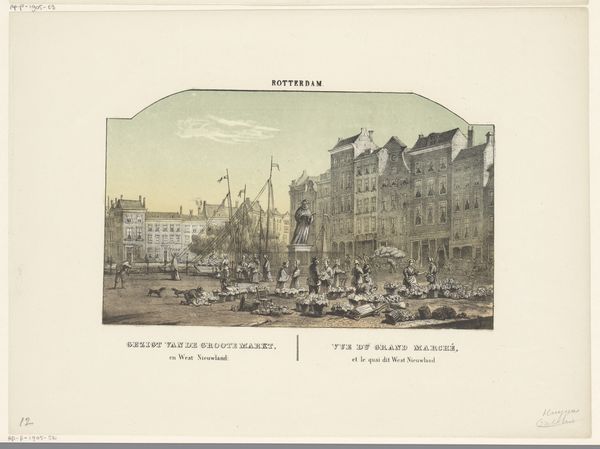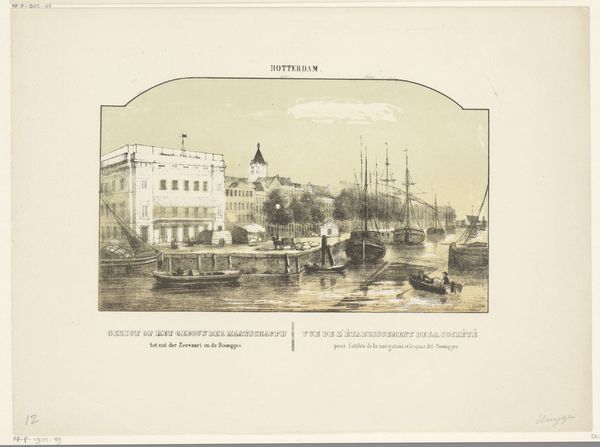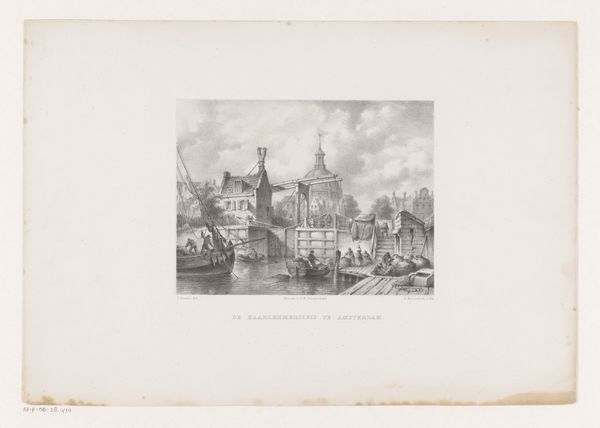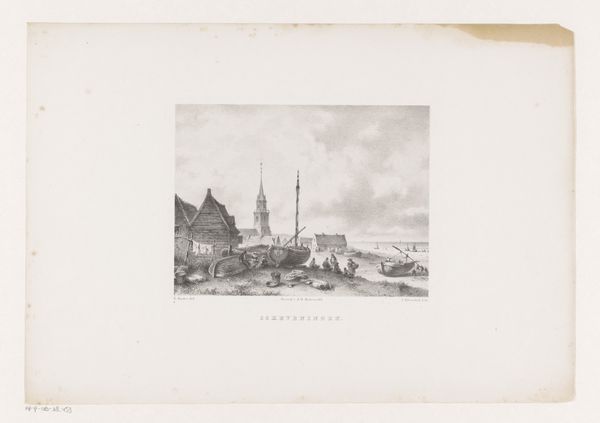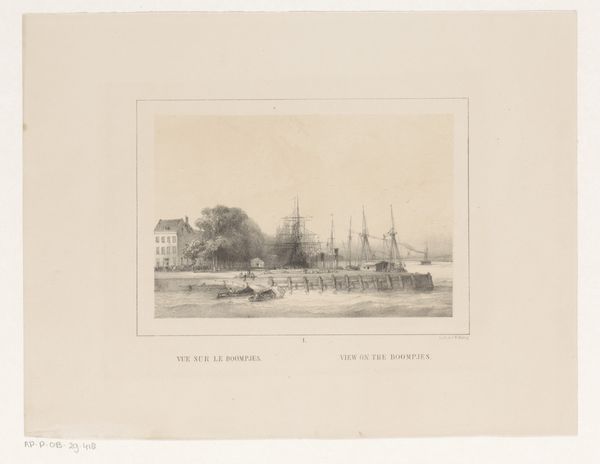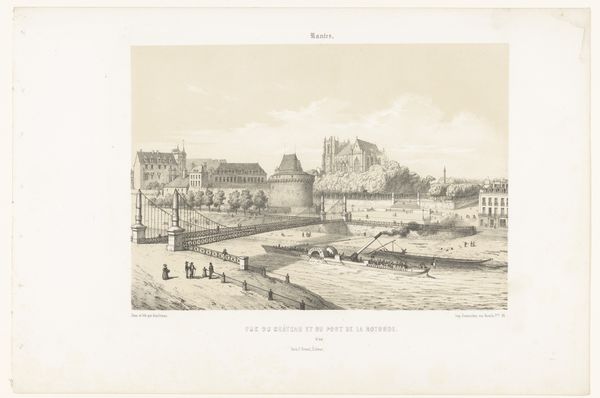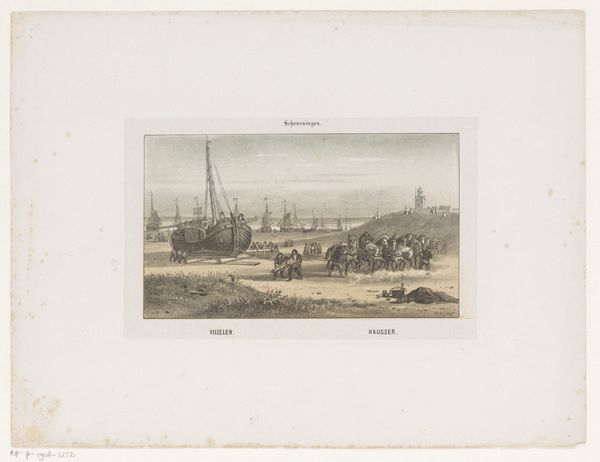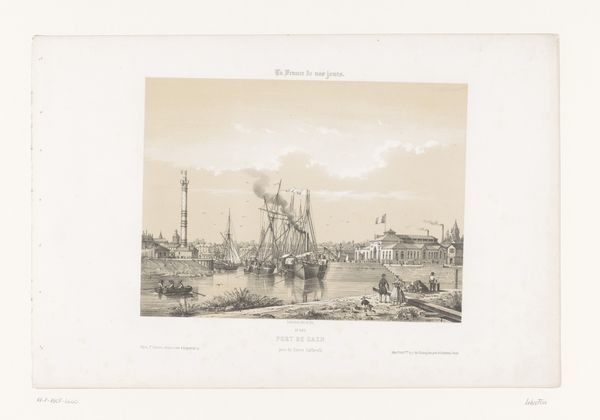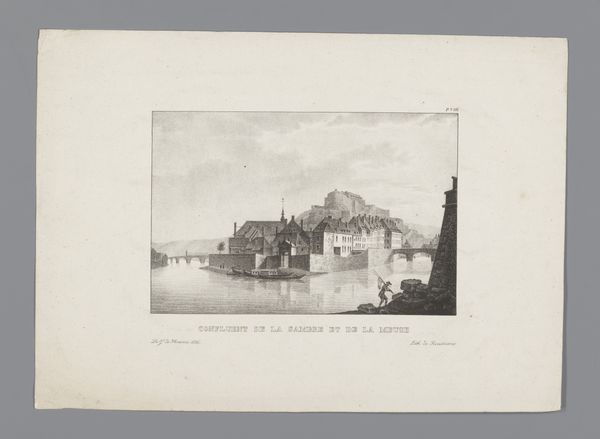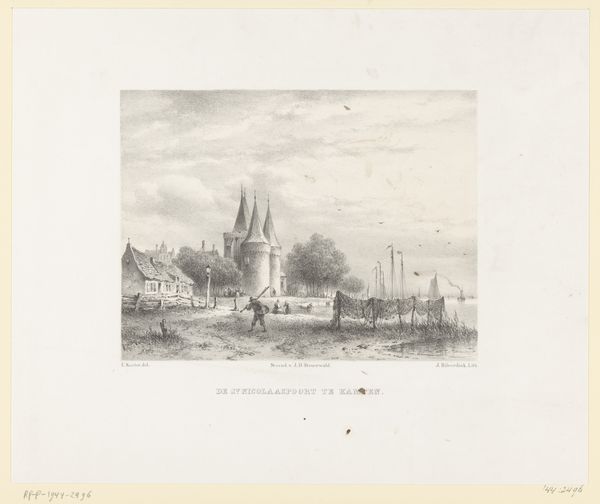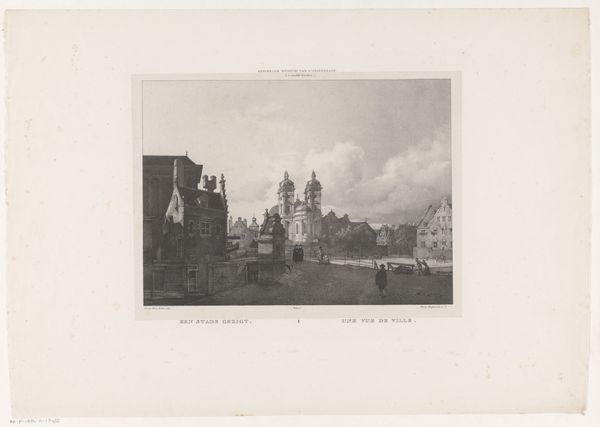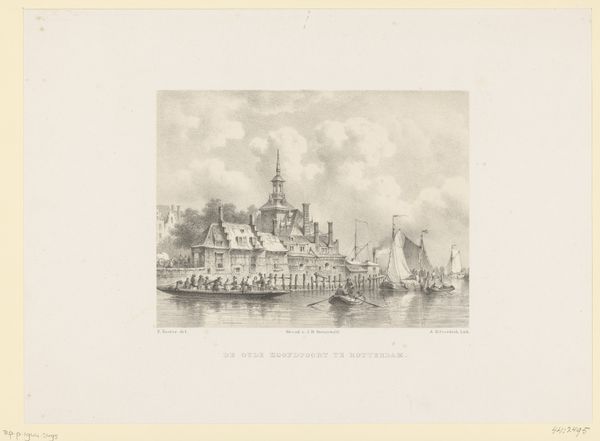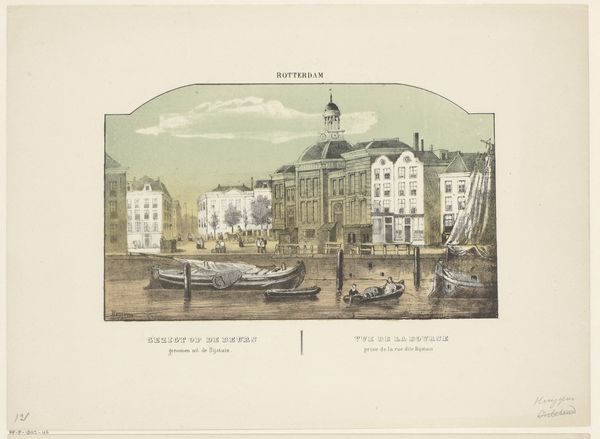
Dimensions: height 280 mm, width 378 mm
Copyright: Rijks Museum: Open Domain
This print of Rotterdam’s old Hoofdpoort, was made by Frederik Lodewijk Huygens using lithography, a method of printing using a stone or metal plate with a smooth surface. Lithography is a planographic process, meaning that the image is neither raised nor incised. The image is drawn on the surface with a greasy substance, and then treated with acid to make the drawing adhere. Ink repelled by the non-drawn areas sticks to the drawing and is transferred to paper. This particular print is a chromolithograph, meaning that it employs multiple stones, one for each color, to produce a colored image. This method allowed for relatively quick reproduction, making images more accessible to a wider public. The soft, grainy texture unique to lithography gives the scene a somewhat hazy, dreamlike quality. The print process is key to understanding the image, its availability, and its status as both a work of art and a document of a time and place.
Comments
No comments
Be the first to comment and join the conversation on the ultimate creative platform.
